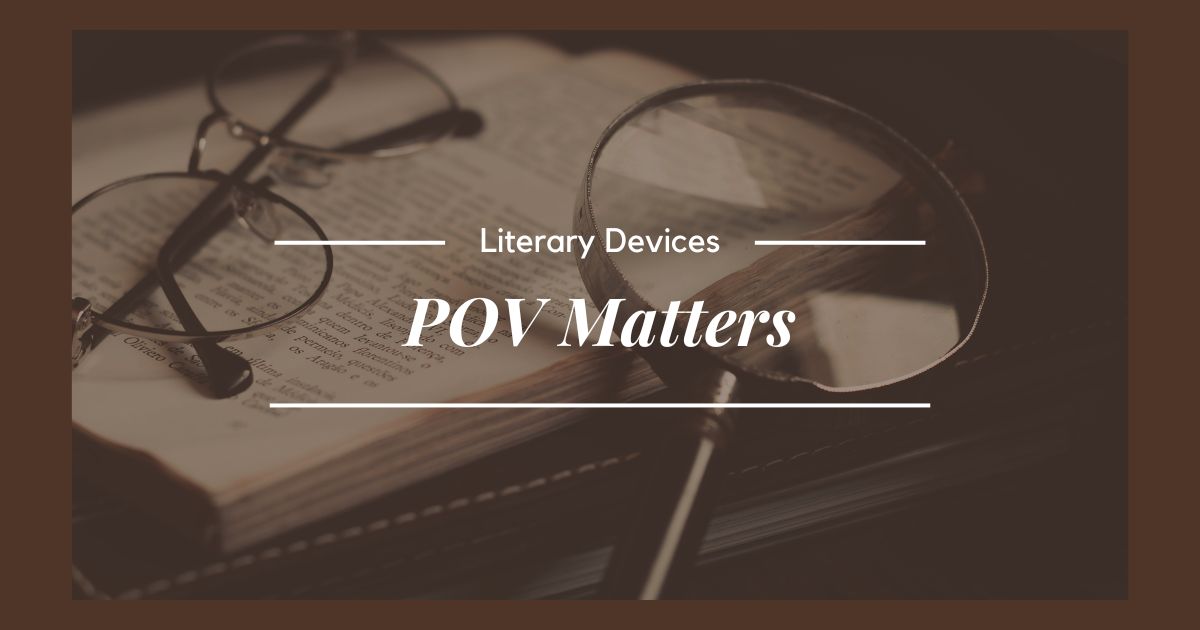Alright, so the main difference is obvious. A single-point-of-view (POV) story has one central main character or narrator. A multi-POV story follows several characters.
But what about the POV makes these stories feel different? And does it affect our enjoyment of these stories?
Let’s talk about it.
Single-POV is for intimacy with the main character
In single-POV, the reader experiences the events solely through the eyes and thoughts of one character. The story unfolds from their personal viewpoint, and the reader gains insight into their emotions, thoughts, and perceptions.
This approach allows for a deep exploration of the protagonist’s inner world and can create a strong sense of identification with that character.
When you’re looking for emotionality or relatability in your stories, picking up a single-POV book may be the right move. Especially if you enjoy watching characters deal with inner struggles, overcome setbacks, or react to plot points.
Multi-POV is for a wide scope
In a multi-POV story, the narrative is told from the perspectives of multiple characters. The story may alternate between different characters’ viewpoints, or it may have distinct chapters or sections dedicated to specific characters’ perspectives.
In these stories, each character provides their unique insights, thoughts, and experiences, offering a broader and more diverse understanding of the story’s events. Multi-POV stories allow for a deeper exploration of multiple characters, their motivations, and their relationships. They can offer contrasting perspectives, build tension through dramatic irony, and provide a more comprehensive view of the story’s world.
When you want a nuanced understanding of the story’s events and characters, then pick up a multi-POV book. They can create suspense by revealing different sides of the story or by presenting conflicting viewpoints.
What are the drawbacks?
Neither option here is perfect. Both can have their limitations, which depend largely on the story, the characters, and the writer’s skill.
In single-POV:
- We are obviously limited to what one character knows and experiences, so if there is something they don’t see, we don’t see it either
- There’s also the risk of bias or unreliable narration (however, these are sometimes meant intentionally); we experience the story as the narrator does, so when they view events with their own slant, it’s possible for the reader to see them that way as well
- It may also provide too little variety, leaving some readers feeling less engaged
Multi-POV has different risks:
- It may remove some of the suspense of not knowing what other characters are doing or thinking
- Constantly shifting perspectives can potentially fragment the narrative and make it hard to connect with the characters
- There may also be less character development overall since each character gets less page time
- Some characters’ POVs may be boring compared to others, which can slow the pacing significantly from section to section, creating a disjointed experience
- In some cases, it may create a story that is too complex – this can lead to confusion about what’s happening, or readers forgetting where they left off with a character when they finally return to that POV
It’s important to note that these drawbacks can be mitigated or even turned into strengths with skilled storytelling techniques and careful execution. Both single-POV and multi-POV storytelling approaches have their merits, and the choice between them ultimately depends on the specific needs and goals of the story.
Is one better than the other?
Objectively speaking, no. As always, it comes down to preference. But – and take this with a grain of salt, as this is just my opinion – I feel it can be harder for a writer to really nail the multi-POV story. Especially more amateur writers. It’s imperative that the narrative “voices” between characters be completely distinct, but sometimes they sound or talk so similarly that it draws me out of the reading experience.
For that reason, I generally prefer single-POV. Though I have really enjoyed some multi-POV books as well.
I’ve noticed a multi-POV trend in romance lately, with these books alternating between the perspectives of both love interests. Personally, most that I’ve read have just been okay. I’m usually bored with one of the characters, and I feel it lessens the romantic suspense. But that’s just me; they’re really popular right now. I think I just really like to speculate over every glance or brush of the hand like, “Does this mean he loves her too?!” But if it were multi-POV, then the next chapter would be him thinking “Yes, I love her,” and I would sigh and put the book down. Question, meet answer. No need to keep reading.
The choice between single- and multi-POV ultimately depends on the narrative goals, the complexity of the story, and the author’s stylistic preferences. Each approach offers a distinct narrative experience and can be used to great effect in different genres and storytelling formats.
As always, if you know what you like, you can spend less time DNF-ing and more time with books you’ll actually like!
Check out some of my other recent blogs:








